List of World War II puppet states
This is a list of
These puppet states or régimes claimed to enjoy full, complete, and independent sovereignty, but took at least some direction from their countries' occupiers.[1] The puppet governments take responsibility for actions taken in the interest of the foreign puppet-master power.
Allies
Soviet Union
The Soviet Union had a number of puppet states during World War II. Almost all of them had previously been under Soviet control or had long been of interest to the regime; almost all of them were entirely or partially under Soviet influence for some time after the war and are post-Soviet states.
The Soviet Union also controlled two states post-war due to their involvement in World War II: East Germany and the Azerbaijan People's Government However these states were gained as a result of fighting during the war and were not themselves directly involved in the conflict; as a result, they are included in this list.
Finnish Democratic Republic – December 1, 1939 to March 3, 1940

Encompassing the
People's Government of Lithuania — July 21, 1940 to August 3, 1940
- (Lithuanian: Liaudies vyriausybė)

Following the
The LSSR regained its independence in 1990, though the Soviet Union refused to recognize its independence until 6 September 1991.[5]
Latvian Soviet Socialist Republic – July 21, 1940 to August 5, 1940
- (Latvian: Latvijas Padomju Sociālistiskā Republika, Russian: Латвийская Советская Социалистическая Республика)

In 1920, the Latvian War of Independence was over, and Latvia gained its independence from Russia. Latvia, along with Estonia and Lithuania, signed the Baltic Entente in 1934, a plan for the countries to politically support each other. On 5 October 1939, Latvia signed the Soviet–Latvian Mutual Assistance Treaty, allowing the Soviet Union to build military bases on Latvian soil.
In the 14–15 July
After being taken by the Germans 10 July 1941, it remained part of
Estonian Soviet Socialist Republic – July 21, 1940 to August 9, 1940
- (Estonian: Eesti Nõukogude Sotsialistlik Vabariik, Russian: Эстонская Советская Социалистическая Республика)
Second East Turkestan Republic – November 12, 1944 to October 20, 1949
- (Uyghur: شەرقى تۈركىستان جۇمھۇرىيىتى, Chinese: 東突厥斯坦第二共和國, Russian: Восточно-Туркестанская Революционная республика)
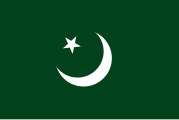
In 1944, the Soviets helped the Uyghur rebel forces take control of Ili, Tarbagatay, and Altay districts.[9] In the Sino-Soviet Treaty of Friendship and Alliance, the Soviet Union agreed that it would no longer support the Eastern Turkestan Republic in return for China letting the Soviet Union keep the Mongolian People's Republic.[10] In 1949, several of the East Turkestan Republic's leaders died in a plane crash while on their way to the Chinese People's Political Consultative Conference. China, which had been eyeing the area since its 1944 rebellion, seized the moment and took control of the area, where most of the remaining leadership accepted the area's incorporation into China.[11]
United Kingdom
Although their forces did occupy its territory during the war, the British-Soviet control of Iran is not traditionally seen as creating a new puppet state due to the explicit involvement of Britain and the Soviet Union in the restructuring of the country's government and the relative freedom of Mohammad Reza Pahlavi, who could still control what remained of the Iranian army.[12]
The United Kingdom sponsored only one government widely recognized as a puppet state during World War II:
Hashemite Kingdom of Iraq — May 31, 1941 to October 1947
- (Arabic: المملكة العراقية)

The United Kingdom had shown interest in Iraq since 1921, when the
Axis
Japan
The
Northeast Supreme Administrative Council – February 16, 1932 to March 1, 1932
(Chinese: 東北最高行政委員會)

On February 16, 1932, the Imperial Army hosted the "Founding Conference" or the "Big Four Conference" with governor of Liaoning, Zang Shiyi, commander of the Kirin Provincial Army, Xi Qia, Heilongjiang governor, Zhang Jinghui, and general Ma Zhanshan to establish the Northeast Administrative Committee. On its second meeting, the committee appointed the previous four and Tang Yulin, Ling Sheng, and Qimote Semupilei as chairmen. On the 18th, the Council issued a statement announcing that "the Northeast provinces are completely independent", all territories of which were in the hands of the council.
Empire of Manchuria – March 1, 1932 to August 20, 1945
East Hebei Autonomous Government – November 25, 1935 to February 1, 1938
- (Japanese: 冀東防共自治政府,)
Mengjiang United Autonomous Government – May 12, 1936 to August 20, 1945
Great Way Municipal Government of Shanghai – December 5, 1937 to May 3, 1938
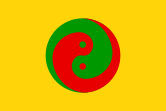
The Great Way Municipal Government (GWMG) was created to help administer the occupied suburbs of Shanghai in December 1937.[23] The GWMG was very small, headquartered in an office building in Pudong. Because of its association with the Japanese government, the GWMG found it hard to attract any politicians of reputation. It had difficulty creating an administration for Shanghai, and after just under five months merged with a new occupation regime in Nanjing.[24]
Provisional Government of the Republic of China – December 14, 1937 to March 30, 1940
Reformed Government of the Republic of China – March 28, 1938 to March 30, 1940

The Reformed Government of the Republic of China (RGRC) was created in Nanking, after the Battle of Nanking on 28 March 1938.[26] The RGRC was intended to appear legitimate. Wang Jingwei was the first Chairman of the RGRC.[27] Despite this, the government was filled with "nonentities who posed no threat to the Japanese exercise of real power." It was merged into the Reorganized National Government of China in 1940.[28]
Reorganized National Government of China – March 30, 1940 to August 15, 1945

Japan wanted to make Wang Jingwei, the former leader of the Provisional Government of China, the leader of a new puppet government. He set up a new Nationalist government and requested that the Three Principles be reinstated, among other things. The Japanese initially denied this request, viewing the Three Principles as "Western ideas," but eventually accepted, with some exceptions: the requested five-branch system was replaced with a one-party system. The Nationalist Government retained independence in financial matters and the economy, but Japan controlled its politics.[29] Despite this, the country had no real power, and was mainly used as a propaganda tool. The country was disestablished in August 1945.[21]: 383
State of Burma – August 1, 1943 to March 27. 1945
(
Second Philippine Republic – October 14, 1943 to August 17, 1945
Provisional Government of Free India – October 21, 1943 to August 18, 1945
- (: আজাদ হিন্দ ভারত)
Empire of Vietnam – March 9, 1945 to August 23, 1945
- (Vietnamese: Đế quốc Việt Nam, Japanese: ベトナム帝国)
Kingdom of Kampuchea – March 9, 1945 to August 15, 1945
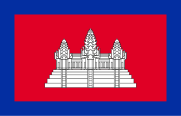
In October 1940, the
Kingdom of Luang Prabang – March 9, 1945 to October 12, 1945
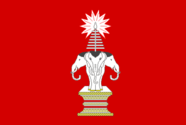
In March 1945, large numbers of French officials in Laos were then imprisoned or executed by the Japanese. The staunchly pro-French King
Italy
Kingdom of Albania – April 12, 1939 to September 8, 1943
- (: Regno albanese)
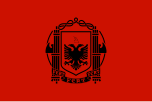
Benito Mussolini viewed Albania as strategically important, began Italian invasion of Albania in 1939. Lost to the Germans after Italy surrendered.[39]
Hellenic State – April 30, 1941 to September 8, 1943

Italy
Germany
The Nazi Germany had a large number of puppet states after World War II began. Some were countries that once supported it, but fell to the Allies. Others were countries that Germany invaded. Reichskommissariats are not included in this list.
Albanian Kingdom – September 14, 1943 to November 29, 1944
- (: Königreich Albanien)

Originally under the control of Italy, the Albanian Kingdom came under the control of Germany after the
Hellenic State – April 30, 1941 to October 12, 1944
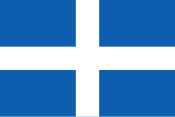
Following
Beginning in January 1941 — following Metaxas' death — the British offer to help was accepted but this help was largely uncoordinated with Greece's own efforts. On 6 April, Germany launched
Slovak Republic – March 14, 1939 to May 8, 1945

In early March, rumors planted by Germans reached Slovakian leaders that Germany would give Slovakia economic support if Slovakia became independent. On 10 March, diplomatic talks between the Czechs and the Slovaks broke down. Germany insisted that Slovakia either declare independence, or be abandoned. It later received a
Shortly afterwards the
Protectorate of Bohemia and Moravia – March 16, 1939 to May 11, 1945
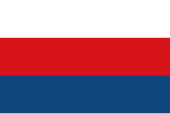
On March 14, the
French State – July 10, 1940 to April 22, 1945

Officially called the French State, Vichy France was established after the German victory over France with
Hitler's intention to invade Great Britain (Operation Sea Lion) could not be realized until Hitler won air superiority, a goal Hitler had trouble attaining. On top of the lack of air support, much of France continued to fight, despite its surrender.[48]
Northern France and Pas-de-Calais were combined with Belgium into the Military Administration in Belgium and Northern France, and further divided into administrative districts such as Gau Westmark. Finally, Vichy France, technically independent from Germany, tried to appease Germany and keep from the same fate as Poland. Philippe Pétain as head of government instituted a number of Fuhrer principles. In November 1942, Germany invaded Vichy France anyway. The Vichy regime was not however replaced with a military government; the German authorities supervised and enforced laws with the aid of the Gestapo.[47]: 171 The Germans occupied France in until after the Allied invasion of France. Although Vichy France was disestablished in 1944, Germany continued to hold French land until Vichy France's capital-in-exile Sigmaringen was captured by allied forces on 22 April 1945.[49]
Independent State of Croatia – April 10, 1941 to May 25, 1945
- (Serbo-Croatian: Nezavisna Država Hrvatska, German: Unabhängiger Staat Kroatien, Kingdom of Croatia-Slavonia, southern Dalmatia, and Bosnia and Herzegovina.[note 1])
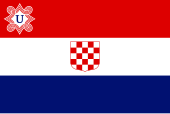
Invaded on 6 April 1941 as part of the
Government of National Salvation (Serbia) – August 29, 1941 to October 4, 1944

The government of General Milan Nedić and sometimes known as Nedić's Serbia was a German puppet régime operating in the Territory of the Military Commander in Serbia[50] during the Axis occupation of Serbia.
Reichskommissariat Norwegen, previously Norway – February 1, 1942 to May 9, 1945
- (Quisling regime,[note 2] Norwegian: Quisling-regime, German: Quisling-Regime)
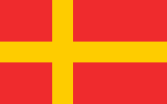
On 9 April 1940, Germany began Operation Weserübung, and invaded Norway and Denmark. Reichskommissariat Norwegen was set up after the successful invasion, which was completed by 10 June. The Norwegian government having fled, Vidkun Quisling announced via radio that there had been a coup, and that he was the new Prime Minister of Norway. However, the German government had other plans, and appointed Josef Terboven as the Reichskommissar of the territory on 24 April 1940.[51] Initially, the Germans planned to depose the Norwegian government, as evidenced by the ousting of Quisling from power in June, however, by September, Terboven had announced that all political parties except Quisling's Nasjonal Samling, which was a mirror of Hitler's Nazi Party, were banned. On 1 February, Terboven declared Quisling the Premier of Norway, making his leadership of the country official, though his direct control of the country remained as minimal as before. Quisling remained in his position of power until the surrender of Germany, on 9 May 1945.[52]
Lokot Autonomy – April 1942 to August 1943
- (Russian: Локотское самоуправление, German: Republik Lokot, Orel, Kursk, and Bryansk of the Soviet Union)
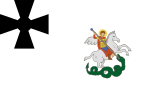
On 22 June 1941, Germany invaded the Soviet Union. Upon reaching
Italian Social Republic – September 23, 1943 to April 25, 1945
- (Italian: Repubblica Sociale Italiana, German: Italienische Sozialrepublik, (parts of the Kingdom of Italy)
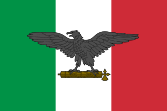
Belarusian Central Rada – December 12, 1943 to July 2, 1944
- ( Belarusian: Беларуская цэнтральная рада, German: Weißruthenischer Zentralrat)

The
Government of National Unity (Hungary) – October 16, 1944 to May 7, 1945
- (Hungary)

Beginning in the fall of 1943, Hitler become increasingly fearful that Romania or Hungary would try to collaborate with the Allies as Italy had, and saw Hungary's aloofness as a key sign of impending collaboration. Hitler devised a plan,
Now Hungary had to defend its borders against both the Soviet Union and Romania. The Romanians also had incentive to invade Hungary, an old territorial dispute. On 24 September, the situation in Hungary was so dire that Horthy hand-wrote a letter to Stalin pleading for peace, going so far as to claim he had been misinformed about the Bombing of Kassa, an event used to bring Hungary to war against the Soviet Union. Hungary had announced the jumping out of the war on 15 October, but German leaders discovered the plan and seized Hungary the same day. Ferenc Szálasi and his party, the fascist Arrow Cross Party, were placed in control of the government, and members of his party took over many government posts. The Government of National Unity was officially set up two days later. It remained under Germany's control until the end of World War II, when it was invaded by the Allies, on 7 March 1945.[63]: 715–716
References
- ISBN 978-0-313-29398-6. Retrieved 13 September 2017.
The term 'puppet state' is used to describe nominal sovereigns under effective foreign control...
- ISSN 0356-8199. (Document, issued by the Finnish Democratic Republic (Suomen kansanvaltainen tasavalta), published on the back coverof this book.)
- ISBN 0-8047-0482-1.
- ^ The Lithuanian Soviet Socialist Republic. Novosti Press Agency Publishing House. 1968. p. 13.
- ISBN 978-9955-584-87-2.
- ^ ISBN 0-8179-9303-7.
- ISBN 0-415-93922-4.
- ISBN 0-8108-6571-8.
- ISBN 978-0-19-993629-8.
- ISBN 978-1-136-82706-8.
- ISBN 0-7656-3192-X.
- ISBN 0-313-30731-8. Retrieved 23 April 2020.
- ISBN 0-313-33414-5. Retrieved 16 May 2014.
Kingdom of Iraq.
- ISBN 1-86064-622-0. Retrieved 16 May 2014.
- ^ Fidgeting Over Foreign Policy: Henry L. Stimson and the Shenyang Incident, 1931;Diplomatic History. Sep2013, Vol. 37 Issue 4, p727-748, via EBSCO Academic search complete,0145-2096 DOI:10.1093/dh/dht029, Accession Number: 89866278
- ISBN 0-7425-3091-4.
- ^ ISBN 978-0-253-22016-5.
- ISBN 978-0-7618-6325-0. Retrieved 15 Jul 2015.
- ^ Utley, Freda (1938). Japan's Gamble In China (PDF). Secker and Warburg. pp. 34–43. Retrieved 15 Jul 2015.
- ^ "E. Hopei to Merge". Manchuria Daily News. 3: 114. 1938. Retrieved 15 Jul 2015.
- ^ ISBN 978-1-4669-0350-0.
- ISBN 978-1-139-51061-5.
- ISBN 0-8047-2796-1.
- ISBN 0-521-82221-1.
- ISBN 978-1-139-56087-0.
- ISBN 978-0-8047-5793-5.
- ISBN 978-0-307-75609-1.
- ISBN 978-1-61234-387-7.
- ISBN 978-0-7618-6325-0.
- ISBN 0-8108-6486-X.
- ISBN 978-0-7614-7642-9.
- ISBN 81-8424-392-8.
- ISBN 81-900715-5-6.
- ^ Chandra Sarkar, Subodh (2008). Notable Indian trials. M.C. Sarkar; Original from: University of Michigan Press. p. 1962.
- ISBN 978-1-4128-2129-2.
- ^ ISBN 0-8248-1110-0.
- ^ Huỳnh, Kim Khánh (1971). The Vietnamese August Revolution Reinterpreted. Center for South and Southeast Asia Studies, Institute of International Studies, University of California. p. 762.
- ISBN 978-0-313-35723-7.
- ISBN 978-1-84511-105-2.
- ^ Barrett, Matt. "Greece in the 2nd World War". Retrieved 11 May 2014.
- ISBN 0-7656-3901-7. Retrieved 10 May 2015.
- ISBN 1-84511-104-4. Retrieved 5 May 2015.
- ISBN 0-8240-7029-1. Retrieved 15 Feb 2015.
- ISBN 978-0-85772-304-8.
- ^ ISBN 1-891227-41-6.
- ISBN 978-0-8108-8030-6.
- ^ ISBN 978-1-58477-901-8.
- ISBN 0-231-12469-4. Retrieved 8 Jan 2015.
- LCCN 71183070. Retrieved 9 Jan 2015.
- ^ Serbia also had a Nazi puppet regime headed by Milan Nedic @ The Balkanization of the West: The Confluence of Postmodernism and Postcommunism – Page 198
- LCCN 60-6729.
- ^ Miller, Francis (1950). The Complete History of World War II. pp. 147–148.
- ISBN 978-1-4128-4786-5. Retrieved 19 Feb 2015.
- ^ ISBN 978-1-4728-0645-1. Retrieved 20 Feb 2015.
- ISBN 978-0-85745-043-2. Retrieved 20 Feb 2015.
- ISBN 1-902454-08-1. Retrieved 23 June 2015.
- ISBN 0-7183-0386-5.
- ISBN 978-90-04-17448-1. Retrieved 20 Feb 2015.
- ISBN 1-135-78948-7. Retrieved 20 Feb 2015.
- ISBN 978-0-300-13435-3. Retrieved 20 Feb 2015.
- ISBN 978-1-78346-247-6. Retrieved 7 Jul 2015.
- ISBN 978-0-385-52485-8. Retrieved 7 July 2015.
- ^ ISBN 0-521-44317-2.
Notes
- ^ These districts are historical districts, and not the direct predecessors of the Independent State of Croatia. They are presented in this way to give the least confusion possible, as the provinces immediately prior were purposely drawn as to avoid historical and ethnic lines, which was what the borders of the NDH were based upon.
- ^ Though the state was officially called the "National Government," it is frequently referred to as the Quisling Regime or the Quisling Government.
